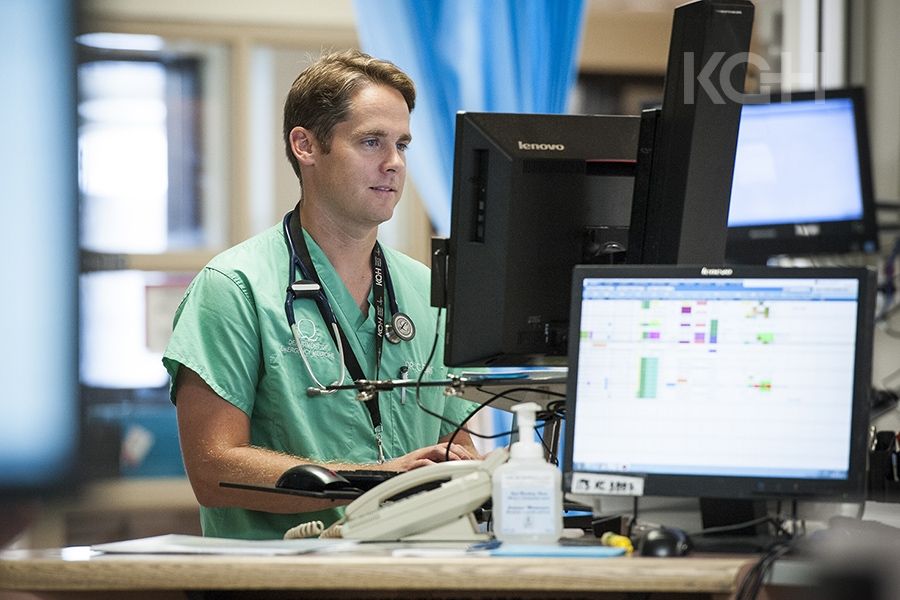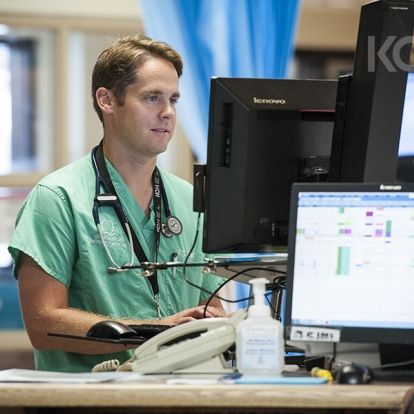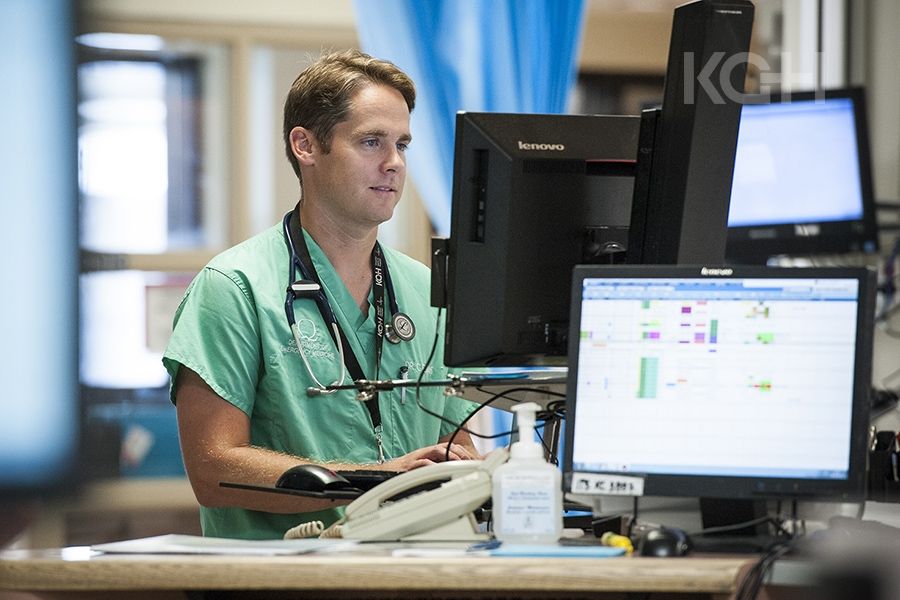Effective immediately masking is required for everyone when present on all inpatient units, in the Emergency Department (ED), the Urgent Care Centre (UCC), and the Children’s Outpatient Centre (COPC).

At Kingston General Hospital (KGH), like in many others across the province, keeping patients moving in and out of the hospital can at times be a difficult task.
But there’s some hope that three new initiatives now underway will help ease the pressure and improve patient flow into, through and out of our hospital. The new initiatives, launched over the past few weeks have been spearheaded by KGH’s Patient Flow Task Force as part of the hospital’s Patient Flow Action Plan.
In the Emergency Department, KGH has begun using a new tool called iCART, which stands for Integrated Community Assessment Referral Team. It’s a screening tool that has been built directly into our Emergency Department Information System (EDIS) that will help high-risk seniors avoid repeated visits to the ED.
“A member of the care team will enter the information based on the patient’s current condition. If the patient meets enough of the iCART criteria, a notice will be sent directly to the South East Community Care Access Centre,” says Cynthia Phillips, Director of Professional Practice Allied and Patient Flow. “The hope is that if these high-risk patients begin to receive the support they need in the community, they won’t progress as often to the point where they’ll require care in the ED.”
The second patient flow initiative is called Health Links. It’s partnership with the South East Local Health Integration Network (SELHIN) and much like iCART, it looks to connect our patients with resources that can provide them with support in the community. Here in the hospital, our role is to find patients who meet the Health Links criteria and to connect them with the LHIN’s Health Links team.
“We’ve currently started using Health Links in the Medicine and Inpatient Mental Health Program, but we will begin to roll it out to other clinical programs in the coming months,” says Phillips. “It’s been shown to be very successful in other communities in limiting the number of times that patients have to come back to the hospital for further support.”
The third initiative isn’t so much a new one as much as it is a renewed focus on making the most of a program that has been around for a while. KGH recently received some additional funding from the LHIN which will allow us to put more resources into our Home First initiative.
“The Home First philosophy essentially means that we need to begin looking at alternatives, other than waiting in the hospital, while our patients who require an Alternate Level of Care wait for a bed to become available in the community,” says Phillips. “We’re going to be looking at getting people back into their homes, with extra community support, while they wait for their preferred accommodation option, such as a long-term care facility.”
The Home First initiative has been proven to be extremely successful in other regions. Some data shows that roughly 50 per cent of the patients who are discharged back home received enough support that they don’t ever have to move into a long-term care bed. The extra funding from the LHIN will be used to hire a staff member to focus on the program and ensure it is being implemented across the hospital.
“We hope that together these initiatives, along with the other work we are doing will help improve patient flow in the hospital as well as ensure that our patients are receiving the most appropriate care based on their needs.”
Gallery


Emergency Physician Dr. Chris Evans enters information into our EDIS system that will be forwarded directly to the CCAC as part of our iCART initiative.



